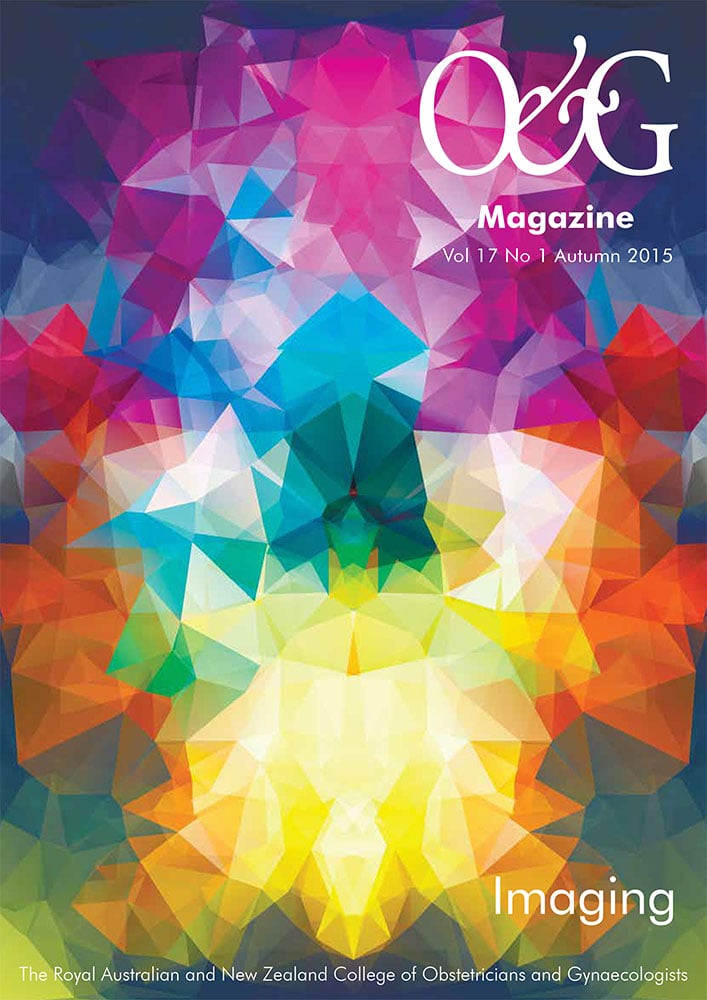Had time to read the latest journals? Catch up on some recent O and G research by reading these mini-reviews by Dr Brett Daniels.
Perforation with IUD insertion
Uterine perforation is a well-known complication with intrauterine device (IUD) insertion, with reported rates of around 0.3 to 2.6 per 1000 insertions. 1 This prospective cohort study followed 61 000 women who had IUDs inserted between 2006 and 2013. Approximately 43 000 women received a levonorgestrel-containing intrauterine system (LNG-IUS) and 18 000 a copper-containing IUD. Women completed a questionnaire at the time of IUD insertion and both patient and treating physician completed a second questionnaire 12 months later. More than 60 000 of the 61 000 women enrolled in the study were available for follow up. Eighty-one perforations were identified during the study, 61 in the LNG-IUS group and 20 in the copper IUD group. Eighty of these were complete perforations. The rate of perforations per 1000 insertions was 1.4 (95 per cent CI: 1.1–1.8) for LNG-IUSs and 1.1 (95 per cent CI: 0.7–1.7) for copper IUDs. The crude relative risk for LNG-IUSs versus copper IUDs was 1.3 (95 per cent CI: 0.8–2.2). Only nine per cent of perforations were identified immediately, most were identified at follow-up. Breastfeeding at the time of insertion was associated with a significant increase in risk of perforation. The relative perforation risk for women breastfeeding versus not breastfeeding was 6.1 (95 per cent CI: 3.9–9.6); the respective relative risks for LNG-IUS and copper IUD users were 6.3 (95 per cent CI: 3.8–10.5) and 7.8 (95 per cent CI: 2.8–21.4). After perforation, the majority of IUDs were removed laparoscopically or vaginally via the strings, with few requiring laparotomy. There were no reported cases of bowel injury, septicaemia, peritonitis or other serious sequelae. The conclusion to be drawn from this study is that uterine perforation remains a risk with IUD insertion, especially in women who are breastfeeding. There is, however, no significant difference in perforation risk between LNG-IUS and copper IUDs and the risk of serious sequelae fortunately appears low.
- Heinemann K, Reed S, Moehner S, et al. Risk of Uterine Perforation with Levonorgestrel-Releasing and Copper Intrauterine Devices in the European Active Surveillance Study on Intrauterine Devices, Contraception, 2015, doi: 10.1016/j.contraception.2015.01.007.
Salpingectomy at hysterectomy
In recent years, there has been an increasing understanding that
high-grade serous ovarian and peritoneal cancers may originate in the Fallopian tubes. Consequently, it has been suggested that removal of the Fallopian tubes at the time of hysterectomy for benign conditions may reduce the incidence of ovarian cancer. Initially performed in women with high-risk inherited cancer genes (for example, BRCA1, BRCA2) more recent suggestions have included prophylactic salpingectomy in all women having hysterectomy for benign conditions, and for salpingectomy rather than clip tubal ligation for sterilisation. A recent RANZCOG statement suggests that consideration be given to these procedures when booking women for benign surgery. 1 Schenberg and Mitchell provide an interesting discussion of this issue in women with a known high-risk of ovarian cancer. 2 As well as clearly elucidating the evidence behind the tubal hypothesis of ovarian cancer, they discuss questions of quality-adjusted life expectancy with different timing of prophylactic bilateral salpingectomy and/or oophorectomy. While early removal of ovaries together with Fallopian tubes will provide the greatest reduction in risk of ovarian cancer in these women, early oophorectomy is associated with an increase in all-cause mortality, primarily from cardiovascular disease. The authors discuss the obvious ethical problems in a randomised controlled trial on the timing of oophorectomy in these women, but cite a modelling study by Kwon et al, which concluded that the highest quality adjusted life expectancy was obtained by an early bilateral salpingectomy, followed by oophorectomy at a later date. 3
- RANZCOG. C-Gyn 25 Managing the adnexae at the time of hysterectomy for benign gynaecological disease. 2014. www. ranzcog.edu.au/editions/doc_view/2030-managing-the-adnexae-at-the-time-of-hysterectomy-for-benign-gynaecological-disease-c-gyn-25.html .
- Schenberg T, Mitchell G. Prophylactic bilateral salpingectomy as a prevention strategy in women at high-risk of ovarian cancer: a mini-review. Front Oncol. 2014, 21. 1-4.
- Kwon JS, Tinker A, Pansegrau G, McAlpine J, Housty M, McCullum M, et al. Prophylactic salpingectomy and delayed oophorectomy as an alternative for BRCA mutation carriers.
Obstet Gynecol. 2013. 121(1):14-24.
Reversal of hysteroscopic sterilisation
Regardless of method, some women who undergo surgical sterilisation will later regret the decision and wish to fall pregnant. Options for these women include surgical reversal of the sterilisation or in vitro fertilisation (IVF). While reversal of tubal ligation has been reported for many years, in more recent times hysteroscopic sterilisation techniques have evolved that may be expected to be more difficult to reverse. Monteith et al report a retrospective study of 70 women who had surgical reversal of hysteroscopic sterilisation and completed follow up at least 12 months later. 1 The vast majority of these women had undergone the Essure procedure (97 per cent) with the remainder having the Adiana procedure. Reversal was performed via a 5–10cm suprapubic incision, followed by removal of the tubal micro-insert. After confirming patency of the distal tubal segments they were reinserted either into bilateral wedge incisions at the site of the previous isthmic sections of the Fallopian tubes, or into a single posterior transverse uterine incision. Surgery was performed on an outpatient basis, with patients returning the day after surgery for assessment. Patients were emailed 12 months later with a questionnaire regarding pregnancies and complications. Of the 70 women in the study followed up at more than 12 months, 25 (36 per cent) reported becoming pregnant, with five women becoming pregnant twice. Of the total 31 pregnancies, 20 resulted in live births, eight were miscarriages, two were ongoing at the time of publication and one was unknown. All were natural conceptions and there were no reported ectopic pregnancies, uterine ruptures or hysterectomies. A further 25 women had the re-implantation surgery, but had less than 12 months follow-up. In this group there were seven pregnancies, including one live birth, four ongoing intrauterine pregnancies, one miscarriage and one ectopic treated with methotrexate. This study opens the possibility of an alternative to IVF for women who desire pregnancy after hysteroscopic sterilisation.
- Monteith CW, Berger GS, Zerden ML. Pregnancy success after hysteroscopic sterilization reversal. Obstet Gynecol. 2014 Dec;124(6):1183-9. doi: 10.1097/AOG.0000000000000543.






Leave a Reply